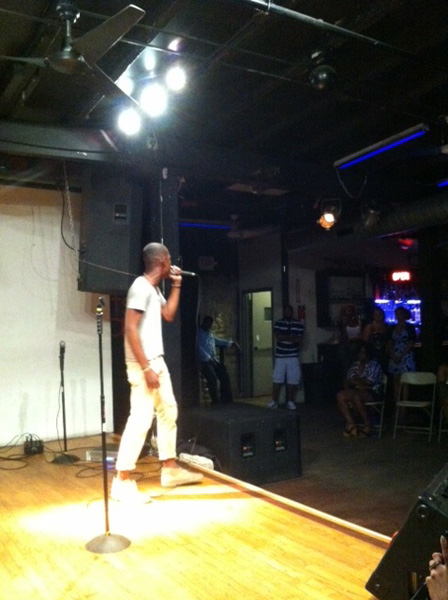
https://vimeo.com/45065065]
After 30 years of urban blight, the rejuvenation of Francisville has begun, largely thanks to the Arts Garage, an eclectic venue bringing energy and attention back to the North Philadelphia neighborhood.

The Arts Garage opened in 2006, but its roots go back to 2001, when the Philadelphia’s Neighborhood Transformation Initiative encouraged Philadelphians to take advantage of the abandoned properties and vacant lots citywide.
Ola Solanke used the initiative as motivation. After individually buying up nine abandoned properties — one of them an old warehouse that he would convert into the Arts Garage — along Ridge Avenue and Parrish Street, Solanke worked with the Francisville community to begin rejuvenating the area.
The Arts Garage is an original part of the Francisville Neighborhood Development Corporation’s plan to redevelop and revitalize the community along Ridge Avenue. The Garage is located in the designated area where art galleries and music venues will be built up to continue promoting Ridge Avenue as the arts corridor that it once was.
“An arts corridor is not just important for Francisville, it’s important for every neighborhood in the city,” said Penelope Giles, the head of the Francisville Neighborhood Development Corp. “Philadelphia is a city of neighborhoods, and each neighborhood should have amenities that serve that neighborhood. Places where people could hear some music and dance, eat good food and listen to jazz. You need to be have all of these things in a neighborhood.”

Throughout the mid-20th century, Francisville thrived with nightlife, entertainment and art. Home to the original Blue Note Jazz Club, the neighborhood once hosted famous performers such as Ella Fitzgerald, Sara Bond, Jimmy Smith and Ray Bryant.
With the Arts Garage, Solanke intended to bring that energy and attention back to Francisville. After $500,000 of renovations, he converted the abandoned 15,000-square-foot warehouse into a two-story arts center.
Temple University professor Kamika Williams-Witherspoon presented a piece called “No More Blues” on the Arts Garage’s opening night in 2006.
“I’ve literally watched it from when there was no stage, no floors, no bathrooms and no steps to where it’s really a remarkable arts center in the middle of North Philadelphia,” Witherspoon said.
There were speed bumps on this journey to Solanke’s dream, however. Many older people in the community were skeptical of his plan for development, uncertain of what to expect from the Arts Garage’s presence.
“Some people don’t want to have a program like the Arts Garage in the neighborhood,” said Dolores Dandridge, a longtime resident of Francisville. “Some people just don’t care for that type of environment, but there’s more noise on the corner coming from drug dealers than is coming from there.”
Solanke offered a different perspective.
“Businesses are certain to fail in the city of Philadelphia before they can even open their doors, in part because people who hold the moral soul of this city allow it to happen,” he said.
In March 2008, the Garage was shut down by the Department of Licenses and Inspection for a series of violations. After receiving a loan from the bank, Solanke made adjustments to not only correct the violations, but also expand the Garage’s possibilities. A second floor was added and new equipment was installed. In November of that same year, the doors reopened.
Currently, the Arts Garage attracts approximately 3,000 individuals monthly for events that bring art, entertainment and nightlife to Francisville.
From 10 a.m. to 5 p.m. daily, the Garage is open to the art community, providing a spot for exhibits, workshops, classes and seminars. Nightly entertainment runs until 10 p.m., with an array of different performances such as poetry readings, open mic nights and comedy. Oftentimes, post-performance dance parties run until 2 a.m.

The Garage’s schedule coincides with the Francisville Neighborhood Development Corporation’s neighborhood plan, constructed in 2005, which aims to convert Ridge Avenue into an 18-hour business corridor.
“Everyone living in that vicinity should expect more galleries and more restaurants that feature live music and cultural things like that,” Giles said. “We want to play off that history. The Arts Garage is an integral part of the revitalization.”


Be the first to comment